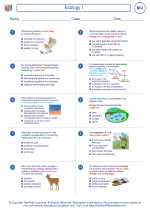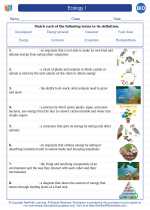Intermolecular Forces
Intermolecular forces are the attractive forces that exist between molecules. These forces play a crucial role in determining the physical properties of substances such as melting point, boiling point, and solubility. There are three main types of intermolecular forces: van der Waals forces, dipole-dipole interactions, and hydrogen bonding.
1. Van der Waals Forces
Van der Waals forces are the weakest type of intermolecular force and are caused by temporary fluctuations in the electron cloud around a molecule. These fluctuations create temporary dipoles, which can induce similar dipoles in neighboring molecules, leading to a weak attraction between them.
2. Dipole-Dipole Interactions
Dipole-dipole interactions occur between polar molecules, where the positive end of one polar molecule is attracted to the negative end of another polar molecule. This type of intermolecular force is stronger than van der Waals forces.
3. Hydrogen Bonding
Hydrogen bonding is a specific type of dipole-dipole interaction that occurs when a hydrogen atom is covalently bonded to a highly electronegative atom (such as nitrogen, oxygen, or fluorine). The partially positive hydrogen atom in one molecule is attracted to the partially negative lone pair on the electronegative atom of another molecule, resulting in a relatively strong intermolecular force.
Study Guide
When studying intermolecular forces, it is important to understand the differences between the three main types and how they affect the properties of substances. Here are some key points to focus on:
- Define intermolecular forces and their significance in determining physical properties.
- Understand the concept of van der Waals forces and how temporary dipoles lead to weak attractions between molecules.
- Explain dipole-dipole interactions and how they differ from van der Waals forces.
- Identify the conditions necessary for hydrogen bonding to occur and describe its role in determining the properties of substances.
- Compare and contrast the strength of van der Waals forces, dipole-dipole interactions, and hydrogen bonding.
- Apply knowledge of intermolecular forces to explain the differences in physical properties between various substances.
By mastering these concepts, you will be well-equipped to understand and analyze the role of intermolecular forces in the behavior of different substances.
[Intermolecular Forces] Related Worksheets and Study Guides:
.◂Biology Worksheets and Study Guides High School. Ecology I

 Worksheet/Answer key
Worksheet/Answer key
 Worksheet/Answer key
Worksheet/Answer key
 Worksheet/Answer key
Worksheet/Answer key
 Vocabulary/Answer key
Vocabulary/Answer key
 Vocabulary/Answer key
Vocabulary/Answer key
